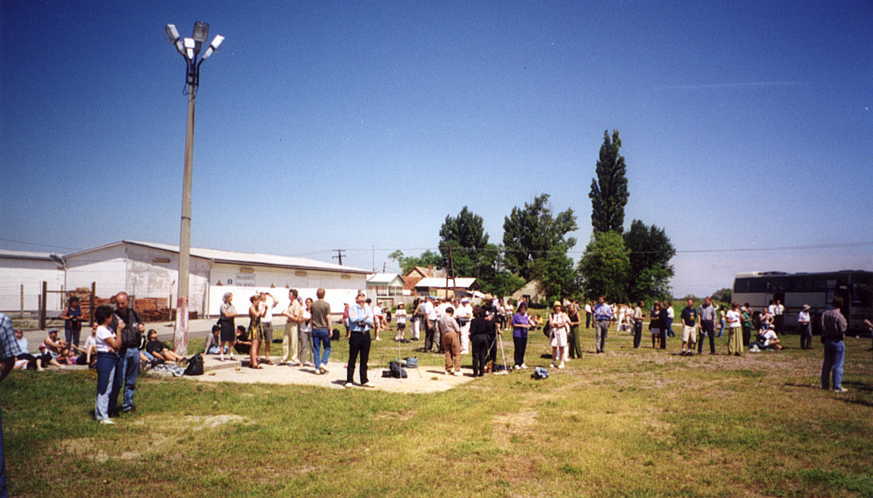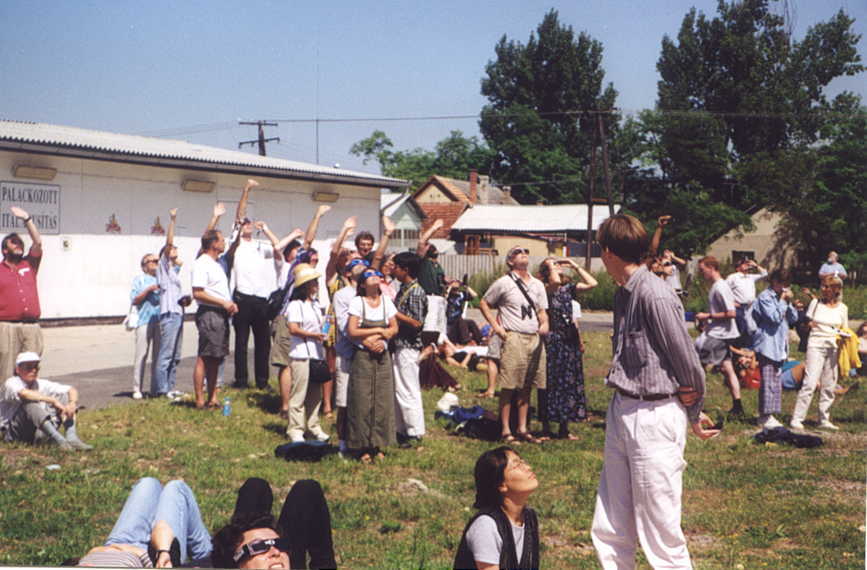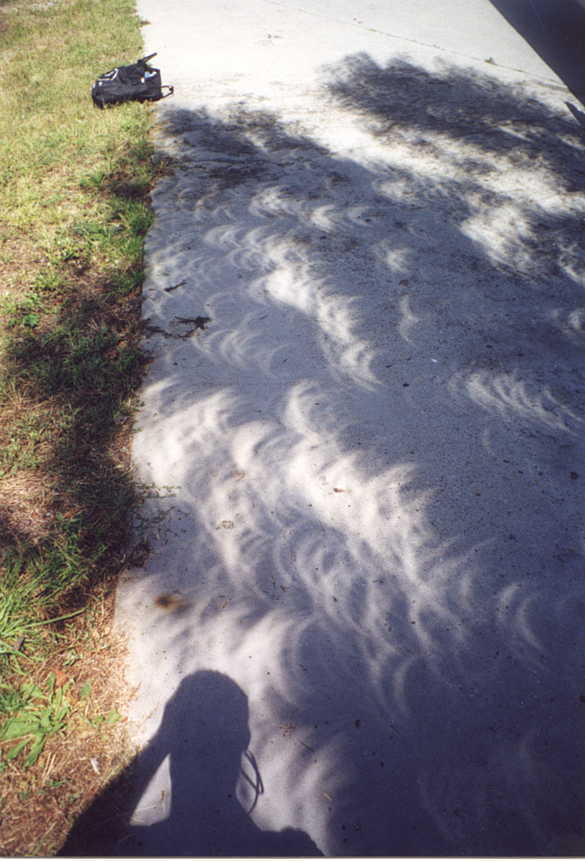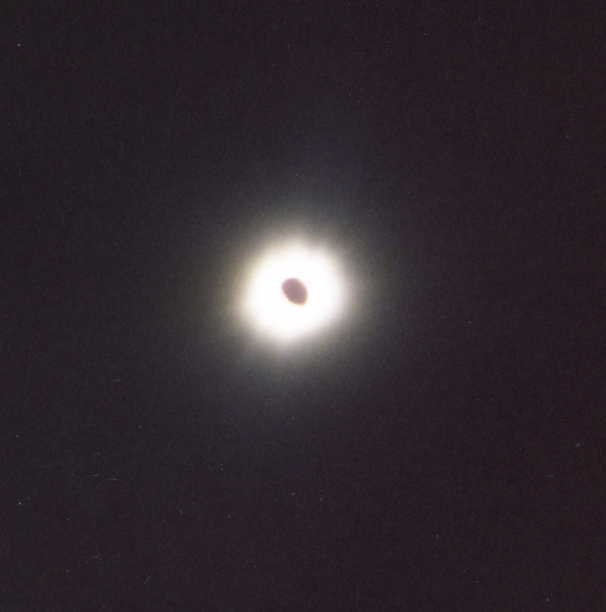
August 1999
1) We had a serious scare the morning of the eclipse. As our motor-coaches were picking us up at our hotels, the sky was cloudy, and as we drove to the planned viewing site (which was to include a lunch of goulash and shows of the legendary Hungarian horsemanship), it only got worse. Our stalwart hosts stopped at a rest stop on the highway, got on the internet and pulled up a weather map, and discovered that the small clearing off to the west was big enough to try for. So we aborted lunch and drove off to the west chasing the hole in the clouds. After maybe half an hour, we were in the clear, and found a vacant lot to park in. We piled out of the coaches and set up shop (including a 12-inch "portable" telescope brought by a group of Danish graduate students -- thanks!). Here, we see lots of astronomers looking up a few minutes before totality began (still partial phase):

2) More astronomers looking up. Some people are wearing eclipse glasses with mylar filters for lenses, so they can look directly at the sun (the glasses block out over 99% of the sun's light, especially the ultraviolet and infrared light that would damage your eyes). Others are holding their hands over the sun in hope of glimpsing some of the bright planets nearby that become visible as the brightness of the blue sky dims a few minutes before totatlity:

3) This is a picture of the shadow cast by a tree. Normally, you see little round "dapples" of sunlight in a tree's shadow, caused by sunlight passing through small gaps between the leaves which act like pinhole cameras to form tiny round images of the sun on the ground. When the sun is partially eclipsed, so are the dapples:

4) Totality. With only about five minutes of totality, I didn't want to waste much time messing with my camera. I decided to take one picture with my best guess of the aperture setting and exposure time (viva la manual camera!). I didn't get it exactly right: the corona is overexposed and the moon looks "washed out" rather than the profoundly black shadow I saw with my eyes. Ah well, its still my photo...
